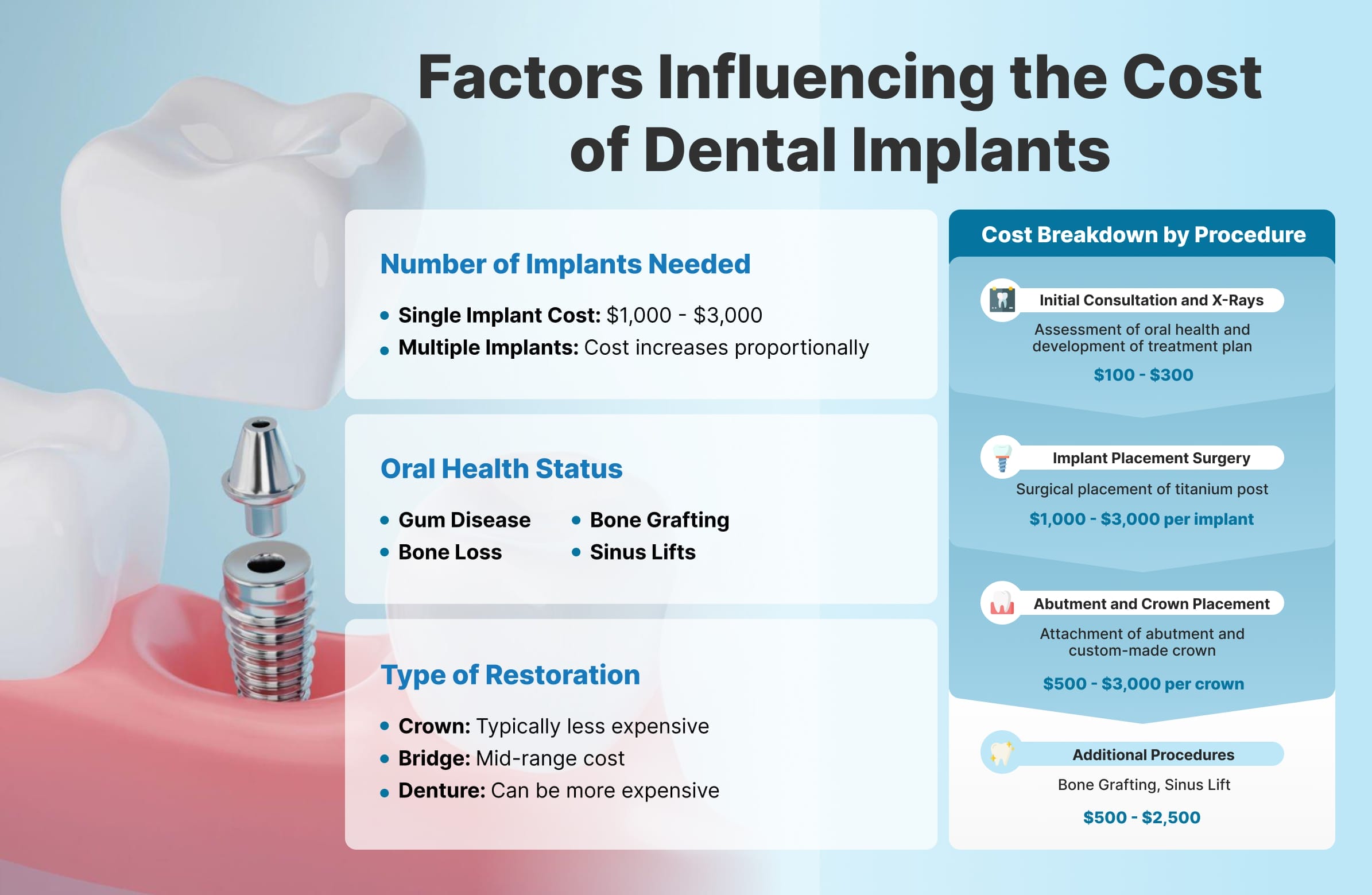3 Simple Techniques For Dental Sense
3 Simple Techniques For Dental Sense
Blog Article
Dental Sense - The Facts
Table of ContentsThe Basic Principles Of Dental Sense Excitement About Dental SenseGetting My Dental Sense To WorkThe 45-Second Trick For Dental Sense
are clinical gadgets operatively dental implanted into the jaw to recover a person's capacity to eat or their appearance. They supply support for fabricated (phony) teeth, such as crowns, bridges, or dentures. When a tooth is shed due to injury or condition, a person can experience problems such as fast bone loss, defective speech, or modifications to eating patterns that lead to discomfort.Dental implant systems contain a dental implant body and dental implant joint and might additionally include a joint addiction screw. Dental implant vs bridge. The oral implant body is surgically inserted in the jawbone instead of the tooth's origin. The oral implant abutment is normally attached to the implant body by the abutment fixation screw and prolongs via gum tissues right into the mouth to support the attached artificial teeth
(https://issuu.com/dentalsense1)Framework of The Dental Implant System selecting dental implants, talk with your oral copyright concerning the prospective advantages and threats, and whether you are a prospect for the procedure. Things to consider: Your general health is an essential element in determining whether you are a good candidate for dental implants, how much time it will certainly take to recover, and for how long the dental implant might remain in location.
Cigarette smoking may influence the recovery procedure and lower the long-lasting success of the dental implant. The healing process for the dental implant body may take a number of months or longer, during which time you generally have a temporary joint instead of the tooth. the dental implant treatment: Thoroughly adhere to the dental health guidelines provided to you by your dental copyright.
The 10-Second Trick For Dental Sense
Implant failure can cause the demand for another operation to fix or change the implant system. Recovers the ability to eat Restores aesthetic look Aids keep the jawbone from shrinking because of bone loss Maintains the health of the bordering bone and periodontals Helps maintain surrounding (nearby) teeth steady Boosts lifestyle Damage to bordering all-natural teeth during implant positioning Injury to the surrounding tissues during surgery, such as sinus perforation Injury during surgical procedure (for instance, crack of surrounding jawbone) Inadequate function, such as seeming like the teeth do not attack together normally A sensation that the tooth hangs or twisting in position arising from a joint screw loosening Implant body failure (looseness of the dental implant body) due to systemic infection, which may be a lot more most likely in clients with uncontrolled diabetes due to neighborhood infection in bone and gums supporting the implant body due to postponed recovery, which might be extra likely in individuals that smoke Difficulty cleansing the periodontals around the dental implant, resulting in inadequate oral health Unattended gum disease Post-surgical tingling due to nerve impingement or damage Constantly inform healthcare service providers and imaging specialists that you have oral implants prior to any magnetic vibration imaging (MRI) or x-ray treatments.
FDA is not knowledgeable about any negative occasions reported for MRI or x-ray procedures with oral implants. Oral implants systems are generally made of products that comply with worldwide consensus standards of the International Organization for Standardization (ISO) or ASTM International. These criteria have details of what makes a risk-free material.

A dental implant is a framework that changes a missing tooth. With screw-like tools, the specialist inserts an implant right into the jawbone, and it acts as an anchor for an artificial tooth, called a crown.
Some Known Factual Statements About Dental Sense
Some people are not qualified for dental implant surgery. It is for dental doctors to run on people with: severe illnessuncontrollable metabolic diseasebone or soft tissue condition or infectionIf these concerns are resolved, an individual can have the surgery. In, oral specialists refrain from operating on individuals with: If individuals with any of the above undergo dental implant surgical treatment, there is a higher danger of the implant falling short.

Dental dental implant surgical procedure is a tailored procedure. It's not the exact same for every person. The adhering to provides a general review of what you can expect your dentist, oral doctor, periodontist or prosthodontist to do: Position the dental implant surgically. Provide you time to recover. Affix the blog post and final crown, bridge or denture.
Next, your specialist will very carefully place the dental implant right into your jaw. Lastly, your doctor will reposition your gum tissues and shut the laceration with stitches. If your dental implant is near the front of your mouth, your dental expert will certainly make a short-term tooth for you to wear until you heal. By doing this, you won't have a gap in your smile while you recover.
Little Known Facts About Dental Sense.
Your supplier can tell you what to expect in your circumstance. During the recovery stage, your jawbone should fuse to the oral implant. This process, called osseointegration, is critical for stability and long-lasting success. This process can take anywhere from 3 to 9 months. Sometimes, it might take much longer.
When your implant heals, your dental practitioner can attach the joint (small connector blog post) and your last remediation (crown, bridge or denture). This generally takes regarding one hour to complete and may see here call for a 2nd small surgery. You should not feel any kind of discomfort during your dental implant procedure due to the fact that your company will certainly make use of medication to numb your periodontals.
Report this page